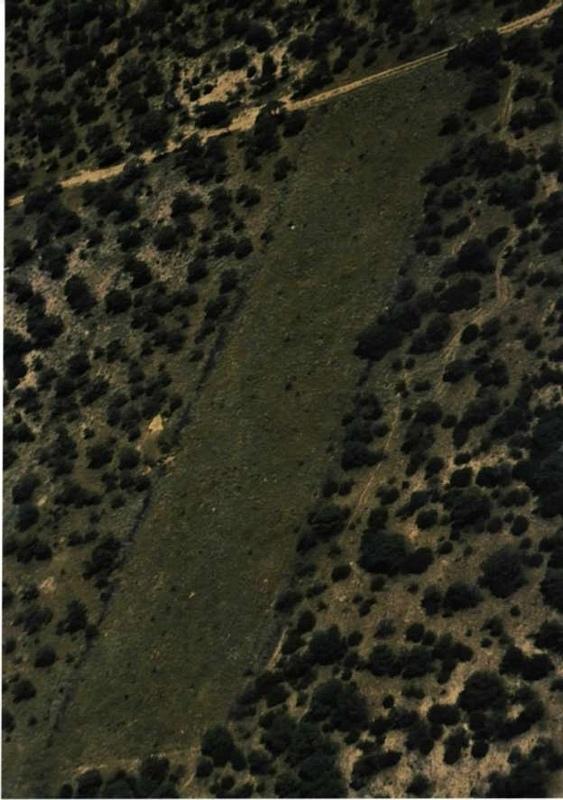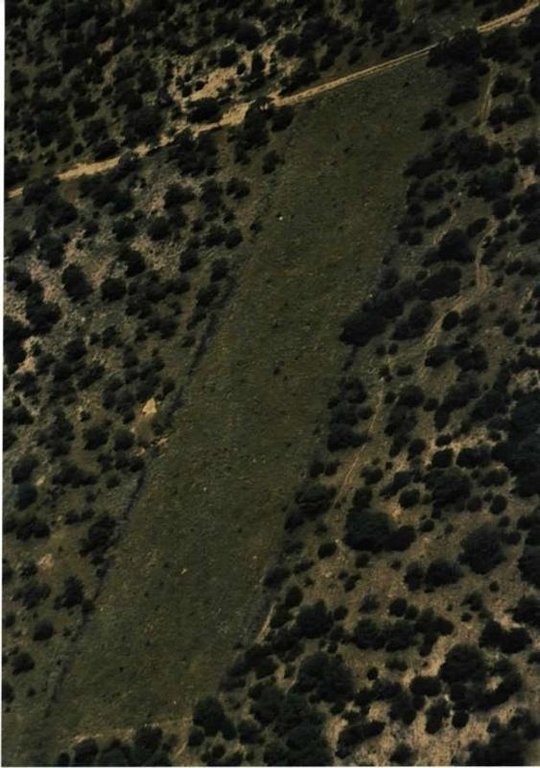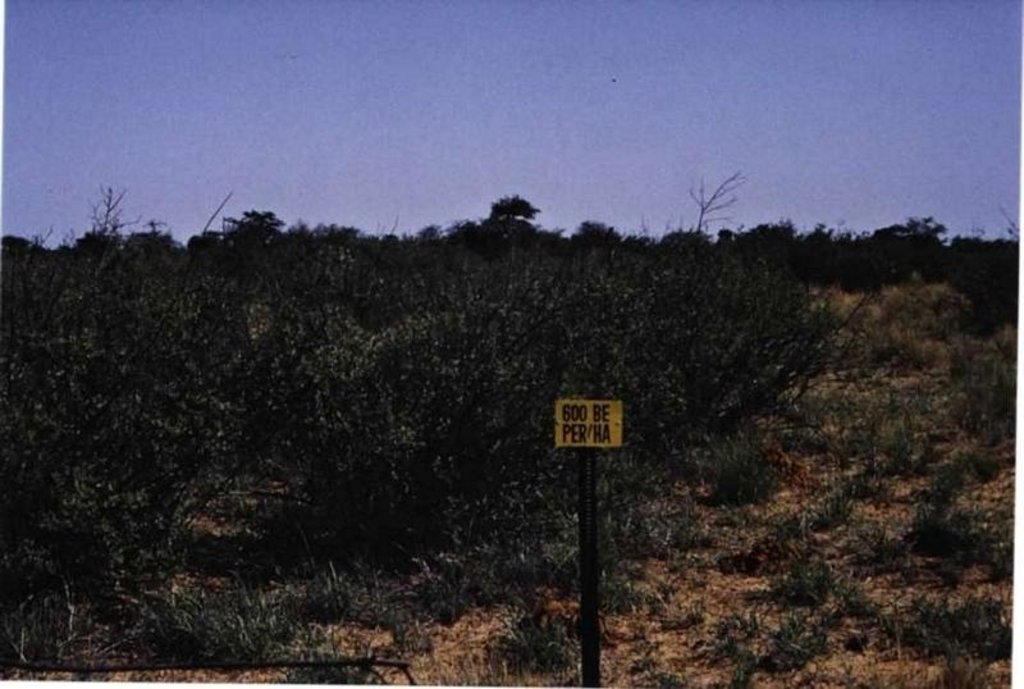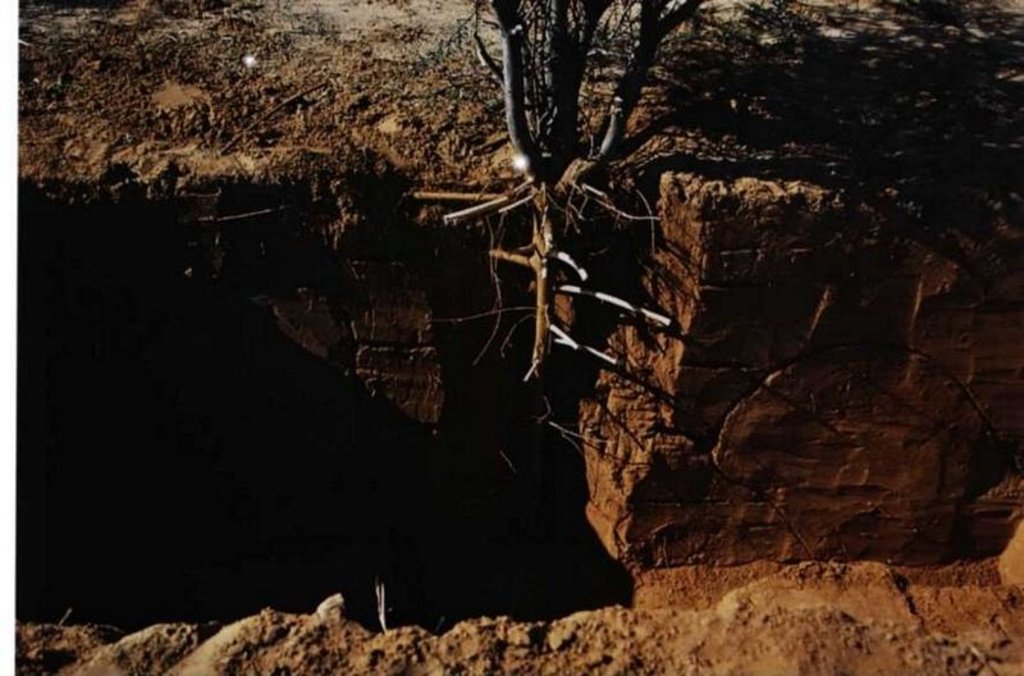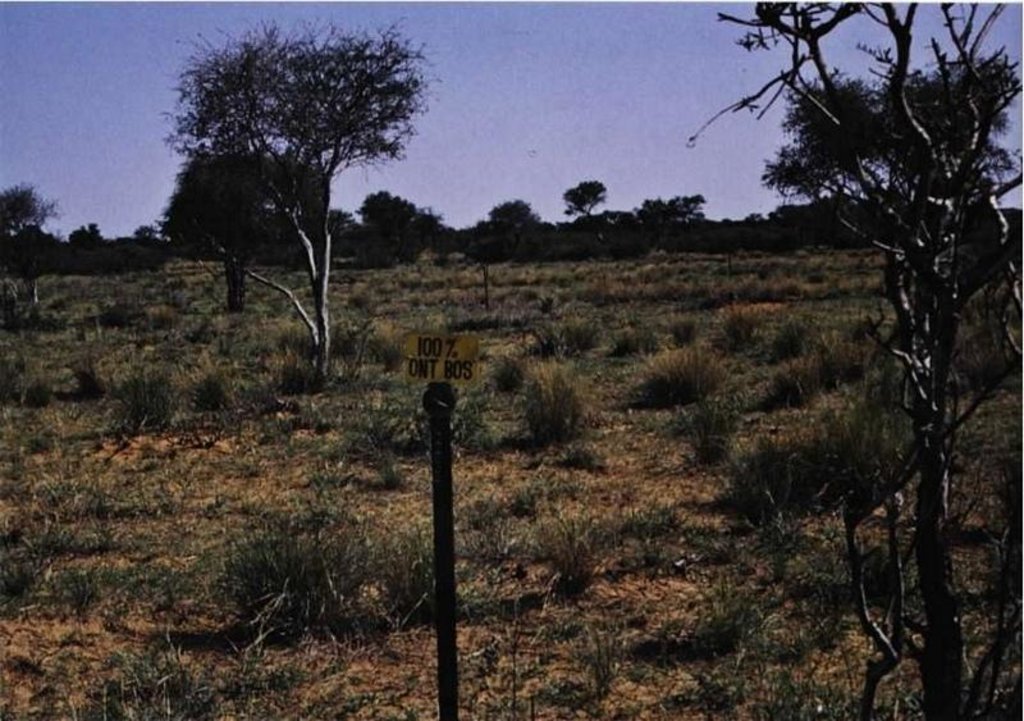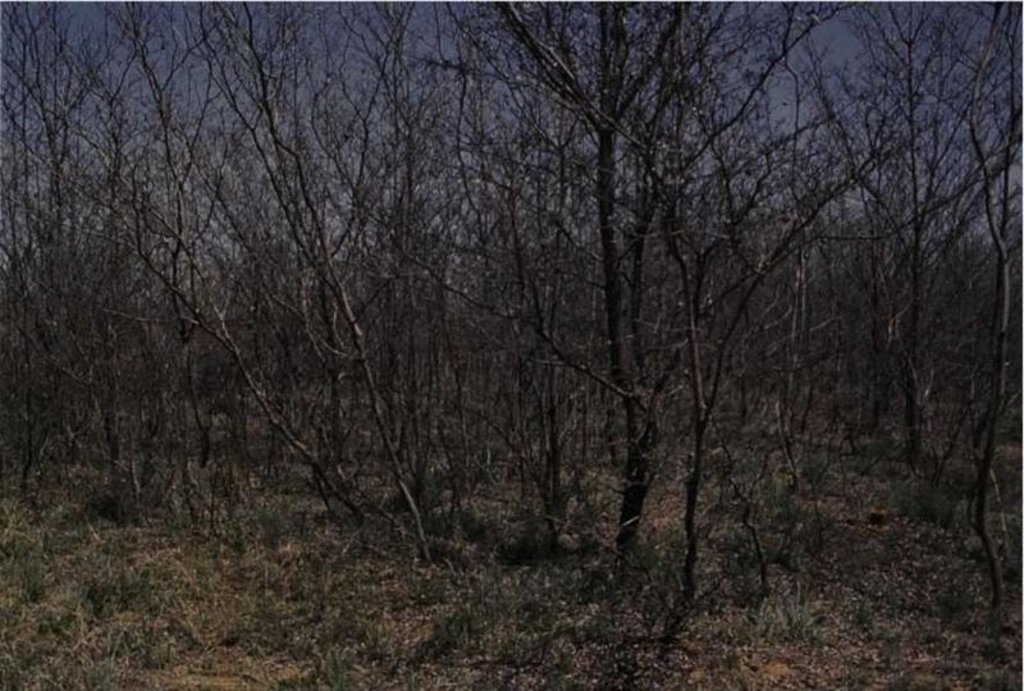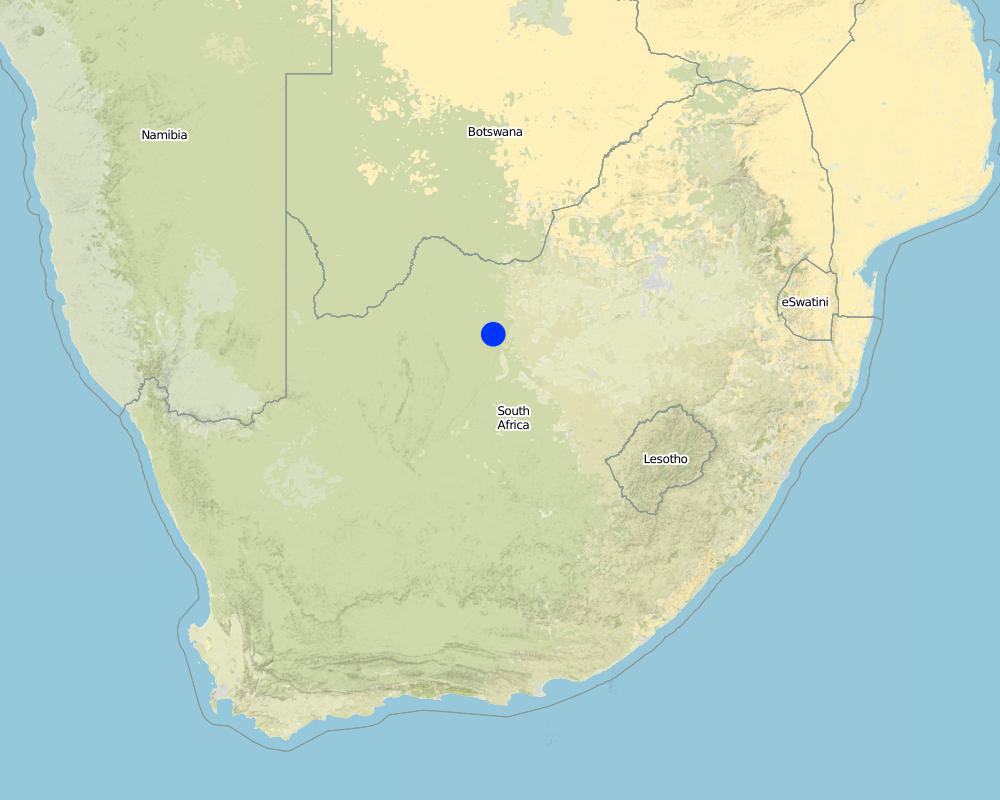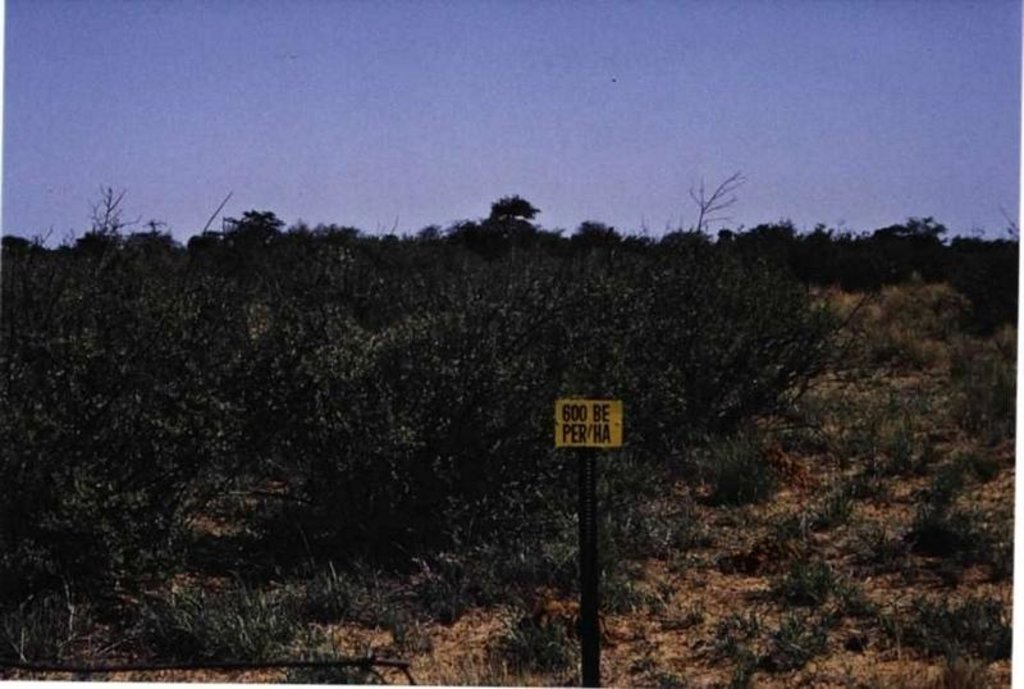Chemical bush control [Afrique du Sud]
- Création :
- Mise à jour :
- Compilateur : Unknown User
- Rédacteur : –
- Examinateurs : David Streiff, Alexandra Gavilano
Chemical bush control with special reference to thinning and clearing
technologies_1375 - Afrique du Sud
Voir les sections
Développer tout Réduire tout1. Informations générales
1.2 Coordonnées des personnes-ressources et des institutions impliquées dans l'évaluation et la documentation de la Technologie
Personne(s)-ressource(s) clé(s)
Spécialiste GDT:
Richter Chris
Department of Agriculture, South Africa
Afrique du Sud
Nom du ou des institutions qui ont facilité la documentation/ l'évaluation de la Technologie (si pertinent)
Department of Agriculture (Department of Agriculture) - Zambie1.3 Conditions relatives à l'utilisation par WOCAT des données documentées
Le compilateur et la(les) personne(s) ressource(s) acceptent les conditions relatives à l'utilisation par WOCAT des données documentées:
Oui
2. Description de la Technologie de GDT
2.1 Courte description de la Technologie
Définition de la Technologie:
To either clear or thin bush (trees) in encroached areas by chemical means.
2.2 Description détaillée de la Technologie
Description:
In some areas, the bushes are so dense (more than 2000 plants/ha) that access to the area is not possible and therefore the aerial application of chemicals is the only solution. All the plants in this area get treated this way, but no selective treatment is possible (this is still a problem to overcome). This aerial application can be selective to some extent because some bushes survive the treatment. If that is the case, selected thinning with chemical bush control can be done on bushes (but not on palatable/usable species).
The purpose was to characterise and control bush encroachment; to define and quantify grass-bush interactions in mixed savannahs, by chemical bush control; to be able to make recommendations for larger application chemical bush control like by aerial application. There was a lack of a technique for economic comparison between the potential loss of income due to bush encroachment and the cost of controlling bush.
Aftercare is very important and is an on-going process. After the first application of the chemicals, it is possible to let in goats. Browsers are better than game, because they browse the small bushes and prevent the area from further bush encroachment. The application of fire is also possible. In this area it should only be done every 7th -10th year (depending on the rainfall and grass production). There is very little communal land in this large area (5 million ha).
2.3 Photos de la Technologie
2.5 Pays/ région/ lieux où la Technologie a été appliquée et qui sont couverts par cette évaluation
Pays:
Afrique du Sud
Région/ Etat/ Province:
North West Province & Northern Cape
Autres spécifications du lieu:
Vryburg, Griekwastad, Mafekeng
Spécifiez la diffusion de la Technologie:
- répartie uniformément sur une zone
S'il n'existe pas d'informations exactes sur la superficie, indiquez les limites approximatives de la zone couverte:
- 100-1 000 km2
Commentaires:
Total area covered by the SLM Technology is 1.4 km2.
The developed technology, bush cleaning & control, will be applied on +- 5 million ha. * The technologies assist of thinning, cleaning & eradication
Map
×2.6 Date de mise en œuvre de la Technologie
Si l'année précise est inconnue, indiquez la date approximative: :
- il y a moins de 10 ans (récemment)
2.7 Introduction de la Technologie
Spécifiez comment la Technologie a été introduite: :
- par le biais de projets/ d'interventions extérieures
Commentaires (type de projet, etc.) :
Started as a research project by the Department of Agriculture in the middle - late sixties and have been updated since the eighties.
3. Classification de la Technologie de GDT
3.1 Principal(aux) objectif(s) de la Technologie
- Improve access to land
3.2 Type(s) actuel(s) d'utilisation des terres, là où la Technologie est appliquée

Pâturages
Pâturage extensif:
- Ranching
Type d'animal:
- ovins
- cattle
Commentaires:
Major land use problems (compiler’s opinion): The negative impact that bush encroachment has on the production and botanical composition of the grass layer in these areas - thus making economical farming impossible.
Major land use problems (land users’ perception): The negative impact that bush encroachment has on the production and botanical composition of the grass layer in these areas - thus making economical farming impossible.
In the small communal areas camps are not used, the area is overstocked.
Ranching: Cattle, sheep
Grazingland comments: A definite shift to game farming and production. Grazing capacity is 10 ha/LSU. Economic farm unit perceived as to be not smaller than 3000 ha.
Type of grazing system comments: A definite shift to game farming and production. Grazing capacity is 10 ha/LSU. Economic farm unit perceived as to be not smaller than 3000 ha.
Number of growing seasons per year: 1
Longest growing period in days: 180; Longest growing period from month to month: Oct - Apr
3.5 Groupe de GDT auquel appartient la Technologie
- Tap/deploy land
3.6 Mesures de GDT constituant la Technologie

pratiques végétales
- V3: Défrichement de la végétation
3.7 Principaux types de dégradation des terres traités par la Technologie

érosion hydrique des sols
- Wt: perte de la couche superficielle des sols (couche arable)/ érosion de surface

dégradation hydrique
- Ha: aridification
Commentaires:
Secondary types of degradation addressed: Wt: loss of topsoil / surface erosion
Main causes of degradation: over-exploitation of vegetation for domestic use (Decrease in game led to over utilising of grass and under utilisation of woody species.), education, access to knowledge and support services (Lack of knowledge - Farmers didn't realise that they were causing the problem by not management correctly the veld)
Secondary causes of degradation: overgrazing (Especially new & around water), other natural causes (avalanches, volcanic eruptions, mud flows, highly susceptible natural resources, extreme topography, etc.) specify (Limiting of natural fires)
3.8 Prévention, réduction de la dégradation ou réhabilitation des terres dégradées
Spécifiez l'objectif de la Technologie au regard de la dégradation des terres:
- réduire la dégradation des terres
- restaurer/ réhabiliter des terres sévèrement dégradées
Commentaires:
Secondary goals: mitigation / reduction of land degradation
4. Spécifications techniques, activités, intrants et coûts de mise en œuvre
4.1 Dessin technique de la Technologie
Spécifications techniques (associées au dessin technique):
Technical knowledge required for field staff / advisors: moderate
Technical knowledge required for land users: moderate
Main technical functions: improvement of ground cover
Secondary technical functions: control of dispersed runoff: retain / trap, increase / maintain water stored in soil
Auteur:
Chris Richter
4.2 Informations générales sur le calcul des intrants et des coûts
autre/ monnaie nationale (précisez):
Rand
Indiquez le taux de change des USD en devise locale, le cas échéant (p.ex. 1 USD = 79.9 réal brésilien): 1 USD = :
6,0
Indiquez le coût salarial moyen de la main d'œuvre par jour:
7.00
4.3 Activités de mise en place/ d'établissement
| Activité | Calendrier des activités (saisonnier) | |
|---|---|---|
| 1. | Soil applied chemicals (tebuthiuron) | Not important, better close to rainy season |
4.4 Coûts et intrants nécessaires à la mise en place
| Spécifiez les intrants | Unité | Quantité | Coûts par unité | Coût total par intrant | % du coût supporté par les exploitants des terres | |
|---|---|---|---|---|---|---|
| Main d'œuvre | Apply chemicals | ha | 1,0 | 40000,0 | 40000,0 | |
| Equipements | Tools | ha | 1,0 | 6000,0 | 6000,0 | |
| Matériaux de construction | chemicals, subsistence allowan | ha | 1,0 | 20000,0 | 20000,0 | |
| Coût total de mise en place de la Technologie | 66000,0 | |||||
| Coût total de mise en place de la Technologie en dollars américains (USD) | 11000,0 | |||||
Commentaires:
Duration of establishment phase: 12 month(s)
4.5 Activités d'entretien/ récurrentes
| Activité | Calendrier/ fréquence | |
|---|---|---|
| 1. | Burning the veld | / 7-10 years |
| 2. | Browsing the veld by goats |
4.6 Coûts et intrants nécessaires aux activités d'entretien/ récurrentes (par an)
| Spécifiez les intrants | Unité | Quantité | Coûts par unité | Coût total par intrant | % du coût supporté par les exploitants des terres | |
|---|---|---|---|---|---|---|
| Main d'œuvre | Burning and browsing the veld | ha | 1,0 | 10000,0 | 10000,0 | |
| Equipements | Tools | ha | 1,0 | 1500,0 | 1500,0 | |
| Engrais et biocides | Chemicals, subsistence allowan | ha | 1,0 | 5000,0 | 5000,0 | |
| Coût total d'entretien de la Technologie | 16500,0 | |||||
| Coût total d'entretien de la Technologie en dollars américains (USD) | 2750,0 | |||||
Commentaires:
High salary of researcher and technician are included in the costs.
4.7 Facteurs les plus importants affectant les coûts
Décrivez les facteurs les plus importants affectant les coûts :
For all 4 plots. They were working on each plot for 3 months. Travel and subsistence costs.
5. Environnement naturel et humain
5.1 Climat
Précipitations annuelles
- < 250 mm
- 251-500 mm
- 501-750 mm
- 751-1000 mm
- 1001-1500 mm
- 1501-2000 mm
- 2001-3000 mm
- 3001-4000 mm
- > 4000 mm
Spécifications/ commentaires sur les précipitations:
The average is +-340mm
Zone agro-climatique
- semi-aride
5.2 Topographie
Pentes moyennes:
- plat (0-2 %)
- faible (3-5%)
- modéré (6-10%)
- onduleux (11-15%)
- vallonné (16-30%)
- raide (31-60%)
- très raide (>60%)
Reliefs:
- plateaux/ plaines
- crêtes
- flancs/ pentes de montagne
- flancs/ pentes de colline
- piémonts/ glacis (bas de pente)
- fonds de vallée/bas-fonds
Zones altitudinales:
- 0-100 m
- 101-500 m
- 501-1000 m
- 1001-1500 m
- 1501-2000 m
- 2001-2500 m
- 2501-3000 m
- 3001-4000 m
- > 4000 m
Commentaires et précisions supplémentaires sur la topographie:
Slopes on average: All sites in the North West Province are flat and only the one site in the Northern Cape is hilly
Altitudinal zone: Duncan, 1057m, Karlsruehe 1200-1500m, Slabbertshof 1130m
5.3 Sols
Profondeur moyenne du sol:
- très superficiel (0-20 cm)
- superficiel (21-50 cm)
- modérément profond (51-80 cm)
- profond (81-120 cm)
- très profond (>120 cm)
Texture du sol (de la couche arable):
- grossier/ léger (sablonneux)
- moyen (limoneux)
Matière organique de la couche arable:
- faible (<1%)
Si disponible, joignez une description complète du sol ou précisez les informations disponibles, par ex., type de sol, pH/ acidité du sol, capacité d'échange cationique, azote, salinité, etc.
Soil depth on average: The site in the Northern Cape is very shallow North West Province the soils are very deep
Soil texture: Coarse in the North West and medium in the Northern Cape
Soil fertility is medium- low in both areas concerned. Very sandy soils, however, and have a poor fertility
Soil drainage / infiltration is good in the North West and poor in the Northern Cape
Soil water storage capacity is low: Plexut 71 mm at a depth 2.1m
5.6 Caractéristiques des exploitants des terres appliquant la Technologie
Orientation du système de production:
- commercial/ de marché
Revenus hors exploitation:
- 10-50% de tous les revenus
Niveau relatif de richesse:
- moyen
Indiquez toute autre caractéristique pertinente des exploitants des terres:
Population density: < 10 persons/km2
Annual population growth: 1% - 2%
15% of the land users are rich and own 20% of the land (Commercial).
85% of the land users are average wealthy and own 80% of the land (Compared with other commercial farmers).
Off-farm income specification: up to 25% farmers get involved in ecotourism (trend is to more game for ecotourism and hunting)
5.7 Superficie moyenne des terres utilisées par les exploitants des terres appliquant la Technologie
- < 0,5 ha
- 0,5-1 ha
- 1-2 ha
- 2-5 ha
- 5-15 ha
- 15-50 ha
- 50-100 ha
- 100-500 ha
- 500-1 000 ha
- 1 000-10 000 ha
- > 10 000 ha
5.8 Propriété foncière, droits d’utilisation des terres et de l'eau
Propriété foncière:
- communauté/ village
- individu, sans titre de propriété
Droits d’utilisation des terres:
- communautaire (organisé)
- individuel
6. Impacts et conclusions
6.1 Impacts sur site que la Technologie a montrés
Impacts socio-économiques
Production
production fourragère
Commentaires/ spécifiez:
Primary production grasses, all seasons, composition changes
qualité des fourrages
production animale
Commentaires/ spécifiez:
With regard to woody component (game farming)
diversité des produits
Commentaires/ spécifiez:
Higher grazing capacity
gestion des terres
Commentaires/ spécifiez:
Creating an open Savannah
Revenus et coûts
revenus agricoles
Autres impacts socio-économiques
Initial cost
Impacts écologiques
Sols
humidité du sol
Commentaires/ spécifiez:
Decrease in encroachers
couverture du sol
Commentaires/ spécifiez:
Grass density, all seasons
Biodiversité: végétale, animale
diversité des habitats
Commentaires/ spécifiez:
Change of habitat
6.4 Analyse coûts-bénéfices
Quels sont les bénéfices comparativement aux coûts de mise en place (du point de vue des exploitants des terres)?
Rentabilité à court terme:
négative
Rentabilité à long terme:
positive
Quels sont les bénéfices comparativement aux coûts d'entretien récurrents (du point de vue des exploitants des terres)?
Rentabilité à court terme:
neutre / équilibrée
Rentabilité à long terme:
légèrement positive
6.5 Adoption de la Technologie
- > 50%
Si disponible, quantifiez (nombre de ménages et/ou superficie couverte):
90 percent of the area
De tous ceux qui ont adopté la Technologie, combien d'entre eux l'ont fait spontanément, à savoir sans recevoir aucune incitation matérielle, ou aucune rémunération? :
- 0-10%
Commentaires:
90% of land user families have adopted the Technology with external material support
There is a strong trend towards spontaneous adoption of the Technology
Comments on adoption trend: See it is working, improvement of the veld return on the inputs
6.7 Points forts/ avantages/ possibilités de la Technologie
| Points forts/ avantages/ possibilités du point de vue de l'exploitant des terres |
|---|
| Improvement in grazing capacity |
| Improvement of veld condition and production |
| Accessibility |
| Points forts/ avantages/ possibilités du point de vue du compilateur ou d'une autre personne ressource clé |
|---|
| Improvement of veld condition and production |
| Accessibility (because it was to dense) |
6.8 Faiblesses/ inconvénients/ risques de la Technologie et moyens de les surmonter
| Faiblesses/ inconvénients/ risques du point de vue de l’exploitant des terres | Comment peuvent-ils être surmontés? |
|---|---|
| Very expensive |
| Faiblesses/ inconvénients/ risques du point de vue du compilateur ou d'une autre personne ressource clé | Comment peuvent-ils être surmontés? |
|---|---|
| Under aero-application utilisable plants can be irradiated, if not adhered to directive | Hand application |
| Very expensive |
7. Références et liens
7.1 Méthodes/ sources d'information
7.2 Références des publications disponibles
Titre, auteur, année, ISBN:
Msc of C. Richter, Gras-bosinteraksie in die bosveldgebiede van Noord-Kaap. 1991.
Disponible à partir d'où? Coût?
C. Richter
Liens et modules
Développer tout Réduire toutLiens
Aucun lien
Modules
Aucun module trouvé


